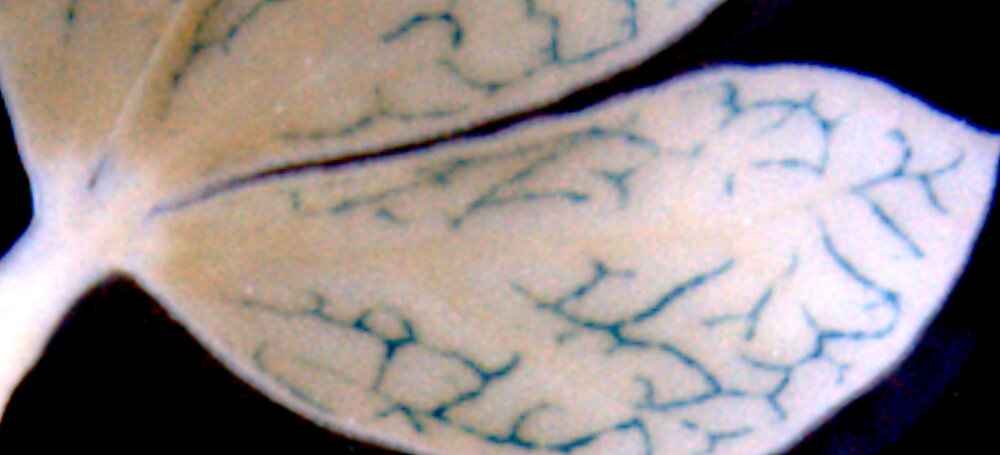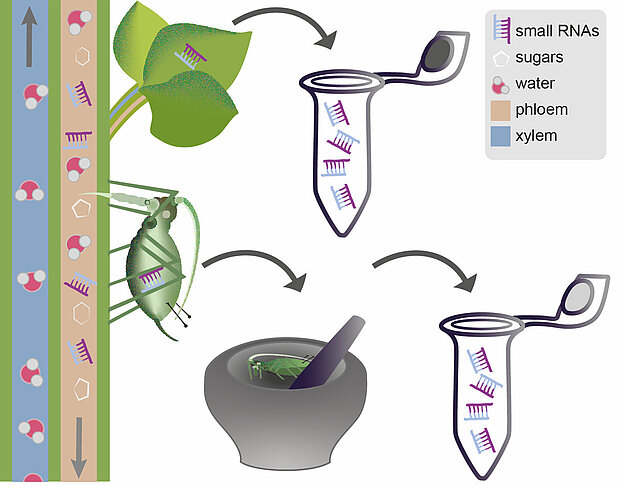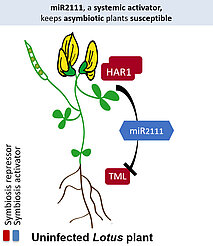The role of small RNAs in systemic communication in plant symbiosis and development
Focus:
The role of small RNAs in systemic communication in plant symbiosis and development
Project participants:
Christian Fröschel

Long-distance signaling of small RNAs is emerging as a key process integrating organismic development in both plants and animals. Our group is particularly interested in micro RNAs (miRNAs) involved systemic regulation of symbiosis. We have identified miR2111 as a systemic activator of symbiosis. Indicating mobility via phloem sap, mature miR2111 is present in aphids feeding on Lotus stems.
Sketch of isolation procedure for small RNAs from aphids feeding on Lotus japonicus stem phloem sap. Graphic: Moritz Sexauer, Angela Fischer
Under conditions favoring symbiosis, miR2111 travels from shoot to root and prevents accumulation of a symbiosis inhibitor, TML (TOO MUCH LOVE), in roots (Tsikou et al. 2018).
For additional information please see Tsikou et al., 2018, Science. HAR1, HYPERNODULATION ABERRANT ROOT FORMATION 1; TML, TOO MUCH LOVE; miR2111, micro RNA 2111
This seems to be a key mechanism in ensuring a host plants' susceptibility to symbiotic infection. We continue to investigate the role and activity of miR2111 in symbiosis control, and look out for other micro RNAs that may be involved in determining symbiotic success either locally in the root or systemically (see also Holt et al., 2015; De Luis et al., 2012; Gupta et al., 2012).
Apart from symbiosis, we are also interested in understanding roles of systemically mobile small RNAs in developmental processes, such as the control of root growth, and its adaptation to biotic and abiotic environmental cues.










